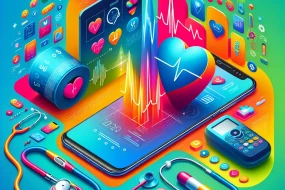
In today's digital age, the way patients and doctors communicate has evolved dramatically. Gone are the days when patients had to wait weeks for an appointment or travel miles just to have a quick consultation. With the advent of technology, particularly mobile applications, patient-doctor communication has become more accessible and efficient. However, as with any digital platform, security remains a top concern. Ensuring that sensitive health data is protected is paramount. This article delves into the intricacies of creating a secure app for patient-doctor communication, offering practical insights and advice.
Understanding the Importance of Security in Health Apps
When it comes to healthcare, the stakes are incredibly high. Patient data is not just any data; it's deeply personal and sensitive. Imagine sharing your medical history, personal identifiers, or even payment details without the assurance of security. It's a daunting thought, isn't it? This is why creating a secure environment for patient-doctor communication is not just a technical requirement but a moral obligation. A breach of this trust can have serious repercussions, not only for the individuals involved but also for the credibility of the healthcare provider.
Key Features of a Secure Patient-Doctor App
1) End-to-End Encryption: At the heart of any secure communication app is robust encryption. End-to-end encryption ensures that only the communicating parties can read the messages. This means that even if data were intercepted, it would be unreadable to unauthorized users.
2) Multi-Factor Authentication: Adding an extra layer of security, multi-factor authentication requires users to provide two or more verification factors to gain access to the app. This could be a combination of something the user knows (a password), something the user has (a smartphone), and something the user is (fingerprint or facial recognition).
3) Secure Cloud Storage: While storing data on the cloud offers convenience, it also poses security risks. Opt for cloud providers that offer top-notch security features, including data encryption and regular security audits.
4) Regular Security Audits: Conducting regular security audits helps in identifying potential vulnerabilities within the app. It's like having a regular health check-up for your app to ensure everything is functioning optimally.
Common Mistakes to Avoid
1) Ignoring User Experience: While security is crucial, it should not come at the expense of user experience. An app that's difficult to navigate or too complex will drive users away.
2) Overlooking Data Compliance: Different regions have different regulations regarding data protection. For instance, in the U.S., healthcare apps must comply with HIPAA (Health Insurance Portability and Accountability Act). Ensure your app is compliant with relevant regulations to avoid legal troubles.
3) Neglecting Regular Updates: Cyber threats are ever-evolving, which means your app's security measures must evolve too. Regular updates and patches are essential to protect against new vulnerabilities.
4) Underestimating Testing: Before launching your app, rigorous testing is essential. This includes security testing, functionality testing, and usability testing. Skipping this step can lead to unforeseen issues post-launch.
Real-World Examples and Analogies
Consider the example of a well-known app like WhatsApp, which utilizes end-to-end encryption to secure communications. Similarly, a patient-doctor app must ensure that sensitive information shared during consultations is protected from prying eyes. Think of it like a secure vault, where only those with the right key can access the contents. Another analogy is the use of a safe deposit box in a bank; only the owner and authorized individuals can open it, ensuring privacy and security.
Best Practices for App Development
1) Involve Security Experts: From the initial stages of development, involve security experts to ensure that security is woven into the fabric of the app.
2) User Education: Educate your users about the importance of security and how they can protect their own data. This could be through in-app tutorials or regular updates.
3) Transparent Privacy Policies: Clearly outline how user data will be used and protected. Transparency builds trust, which is crucial in healthcare.
4) Feedback Mechanism: Implement a system where users can report security concerns or suggest improvements. This not only helps in enhancing security but also engages users in the development process.































